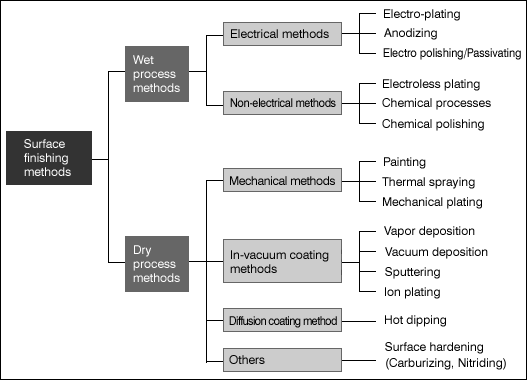#001 Hydrogen Embrittlement
It is frequently mentioned that electro-plated steel alloy objects can suffer breakage due to hydrogen embrittlement. What then is hydrogen embrittlement?
There are several definitions mentioned in JIS. Some are: "A phenomenon where plated object becomes brittle by absorption of hydrogen during plating and pre-treatment processes" (Electro-plating term), "Degradation of steel alloy's ductility or toughness caused by absorbed hydrogen into the steel alloy. This phenomena often occurs during pickling and electro-plating processes. The object may often break when subjected to tensile stress." (Steel alloy term). In all cases, it points to a phenomenon where materials become brittle due to hydrogen.
Occurrence of hydrogen embrittlement
Hydrogen embrittlement has been known for quite some time. It had become a problem when electroplating high carbon spring steel, notably. It has attracted technical attention in the late 1950s when high strength steel alloys came into wide usage by aerospace industry, and frequent failure of electro-plated aircraft parts produced from the high strength alloys occurred.
What type of surface finishing processes cause hydrogen embrittlement? General surface finishing process methods are classified in the following [Fig.].

Since the wet process methods use aqueous solutions, dangers of hydrogen embrittlement exits if hydrogen formation at base metal surface occurs.
On the other hand, the dry process methods which do not use aqueous solutions are not subject to hydrogen embrittlement, but pre-processes such as de-greasing and de-rusting processes are wet and they contain risks of hydrogen embrittlement.
As mentioned above, not just the actual plating process but all the associated processes must be evaluated when evaluating the risk of hydrogen embrittlement.
- Environmental conservation
- Hot Dipping
- Anodic Oxidation Process
- Anodic oxidation treatment
- Anodizing
- Corrosion - Corrosion Protection
- Electroless Plating
- Electroplating
- Heat treating
- Hydrogen embrittlement
- Metal cleaning
- Metal etching
- Painting
- Special paints
- Surface Treatment
- Surface-treated steel sheets
- Thermal Spraying



